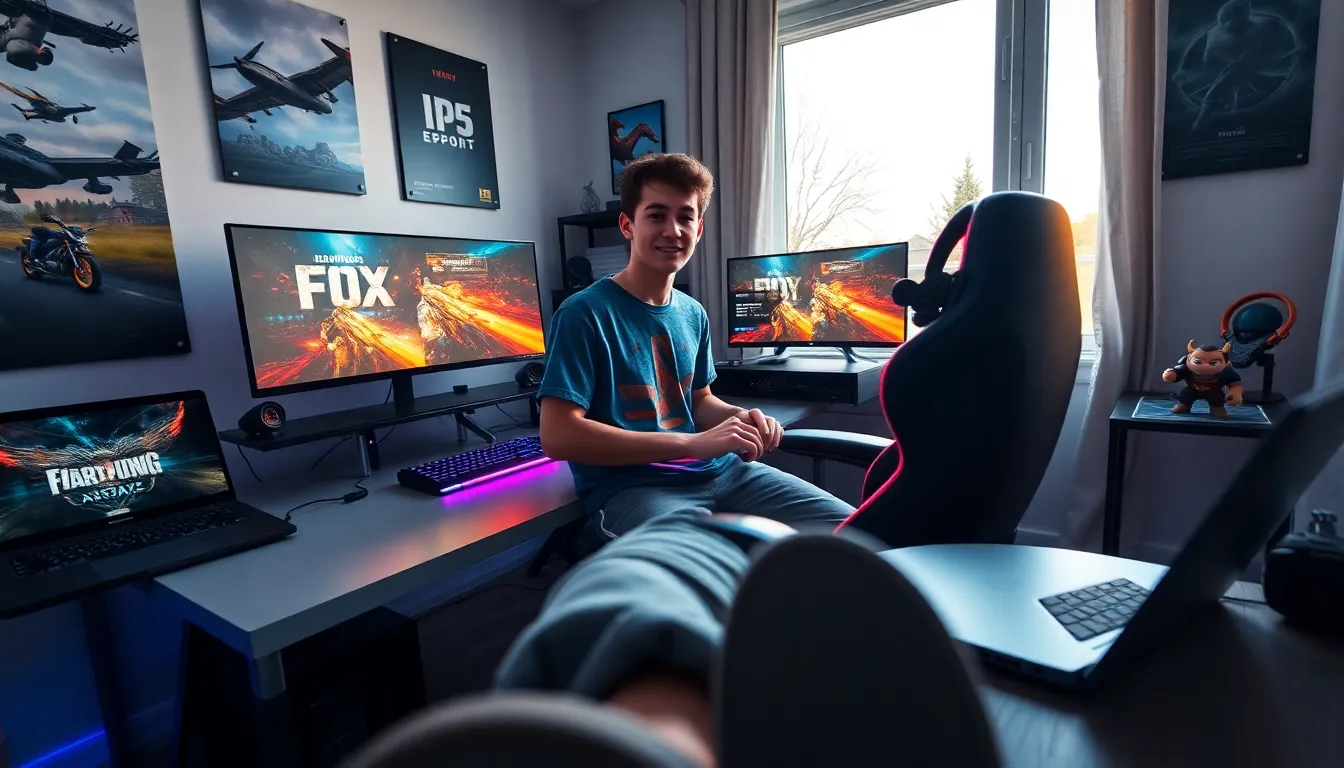In a world where binge-watching is a competitive sport and scrolling through social media feels like an Olympic event, it’s time to hit the brakes on screen time. While screens offer endless entertainment and a portal to connect with friends, they can also turn into sneaky time thieves, robbing us of precious moments in the real world.
Imagine trading a few hours of screen time for a walk in the park or a good book that doesn’t require a charger. Limiting screen time isn’t just about putting down devices; it’s about reclaiming life’s little joys. So, grab your favorite snack, put your phone on silent, and let’s dive into why dialing back on screen time can lead to a happier, healthier you.
Table of Contents
ToggleImportance Of Limiting Screen Time
Limiting screen time plays a crucial role in fostering overall well-being. Reducing the hours spent in front of screens can lead to significant improvements in various aspects of life.
Impact On Health
Excessive screen time affects physical health negatively. A direct correlation exists between long hours of screen use and increased rates of obesity, eye strain, and sleep disorders. Individuals who spend more than three hours a day on screens are 50% more likely to experience sleep disturbances. Engaging in physical activities lowers the risk of such health issues. Decreased screen time encourages movement, promoting cardiovascular health and better posture. Overall, prioritizing reduced screen exposure can lead to healthier lifestyles.
Benefits For Mental Well-being
Limiting screen usage enhances mental well-being substantially. Studies suggest reduced screen time may lower the risk of anxiety and depression. Individuals who engage in fewer online interactions often report improved mood and better social connections. Quality time spent on hobbies or face-to-face activities can replenish emotional reserves. Reconnecting with reality fosters creativity and reduces feelings of loneliness. Emphasizing these benefits leads to healthier mental states and promotes a balanced lifestyle.
Strategies To Limit Screen Time


Implementing effective strategies can significantly reduce screen time. These methods help individuals reconnect with the real world.
Setting Boundaries
Establishing clear boundaries for screen use promotes healthier habits. Designate specific times for using devices, such as limiting usage to one hour after school or work. Encourage breaks every 30 minutes during extended screen sessions to reduce eye strain and increase productivity. Setting a family media plan creates shared expectations, fostering accountability. Adults can lead by example, modeling appropriate screen behavior for children. This approach reinforces healthy routines, making it easier for everyone to adhere to the agreed-upon restrictions.
Creating Tech-free Zones
Designating tech-free zones in the home encourages connection and engagement. Bedrooms or dining areas can serve as spaces free from technology distractions. In these areas, focusing on conversations helps strengthen relationships. Families can schedule regular tech-free meals to promote interaction and enjoyment of food. Additionally, incorporating designated times for family activities, such as game nights, keeps everyone engaged without screens. Establishing these zones cultivates a more balanced lifestyle and fosters emotional well-being.
Tools And Resources
Several tools and resources exist to assist in managing screen time effectively. These options help individuals and families cultivate a healthier digital environment.
Apps To Help Monitor Screen Time
Various apps provide valuable insights into screen usage. Examples include Screen Time, Moment, and Forest. Screen Time tracks daily device usage and allows users to set limits on specific apps. Moment offers a detailed breakdown of time spent across services, helping users identify patterns. Forest gamifies screen time reduction by encouraging users to focus on real-life tasks to grow virtual trees. Utilizing these tools enables individuals to stay informed and make conscious choices about their screen habits.
Recommendations For Families
Establishing screen time limits benefits the entire family. Prioritize tech-free zones in the home, such as bedrooms and dining areas, to foster connection. Implement regular tech-free activities, like family game nights or outdoor outings, to strengthen relationships. Designating specific screen times helps children develop healthy routines. Encouraging open discussions about digital boundaries cultivates mutual understanding and respect. Following these strategies creates a balanced lifestyle where screen time supplements rather than detracts from interpersonal connections.
Challenges In Limiting Screen Time
Limiting screen time presents several challenges that individuals must navigate. Overcoming resistance often becomes a significant hurdle. Individuals may feel reluctant to reduce screen usage because they associate it with entertainment and socializing. Family members, especially children and teens, might resist changes due to established habits, which can complicate the process. To combat this, presenting engaging alternatives can encourage participation in physical activities or hobbies. Consistently reinforcing the benefits of reduced screen time can also help foster acceptance.
Dealing with work requirements adds another layer to the challenge. Many professions necessitate screen use for productivity, often leading to extended hours of digital engagement. Individuals may struggle to disconnect when work demands blur boundaries between personal and professional time. Establishing clear work hours can create a healthier balance. Prioritizing tasks effectively enables individuals to minimize unnecessary screen use during work hours. Incorporating scheduled breaks allows for movement and mental rest, contributing to overall well-being while meeting work commitments.
Limiting screen time is essential for fostering a healthier lifestyle. By reducing device usage individuals can enhance their physical and mental well-being while nurturing real-world connections. Engaging in activities outside the digital realm not only promotes joy but also strengthens relationships.
Implementing strategies like setting boundaries and creating tech-free zones can significantly improve family dynamics. Embracing this balanced approach leads to improved mood and creativity while reducing feelings of loneliness.
Ultimately it’s about reclaiming time for what truly matters. By prioritizing meaningful interactions and activities individuals can cultivate a fulfilling life beyond the screen.






